How much will power cost in Massachusetts this winter? November's key insights
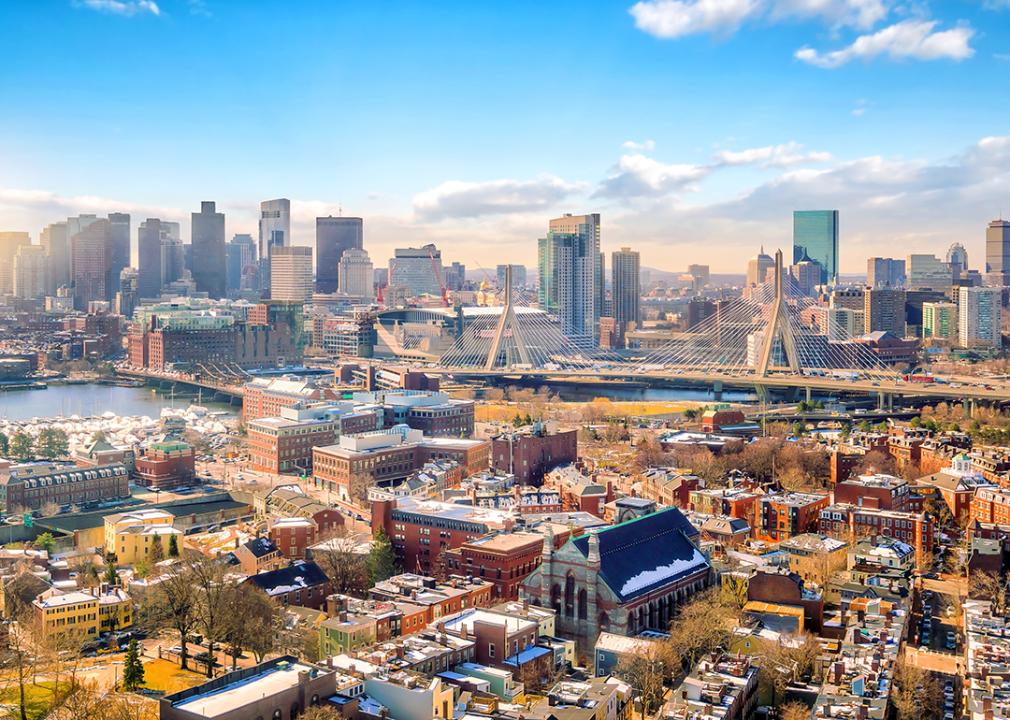
f11photo // Shutterstock
How much will power cost in Massachusetts this winter? November’s key insights
A view of Boston’s skyline during the winter in Massachusetts.
With electricity prices varying across the U.S.—from California’s high of 32.56 cents per kilowatt-hour (kWh) to Louisiana’s low of 11.50 cents per kWh—knowing what you’ll pay and how much energy you’re likely to use is crucial. Arbor provides a November 2024 update on Massachusetts electricity rates, expected usage patterns, and tips for reducing your bill this month.
How Much Does Electricity Cost Right Now?
In Massachusetts, the cost of electricity is highly influenced by the electricity supply rate, which is the price paid per unit of electricity (measured in kilowatt-hours or kWh). There are two types of supply rates:
- Utility supply rate: This is the standard rate offered by local utility companies. Most consumers are on this rate unless they have switched to a third-party supplier.
- Third-party supply rate: In Massachusetts’s deregulated energy market, consumers can also choose a third-party energy supplier that offers competitive rates, which can sometimes be lower than the utility’s standard supply rate.
The average utility supply rate in Massachusetts for November 2024 is around 16.19 cents per kWh, depending on your utility provider. With winter around the corner, Massachusetts residents should prepare for the seasonal rise in electricity demand and costs. Here’s the current breakdown of electricity rates across all major Massachusetts utilities, from most expensive to least expensive:
![]()
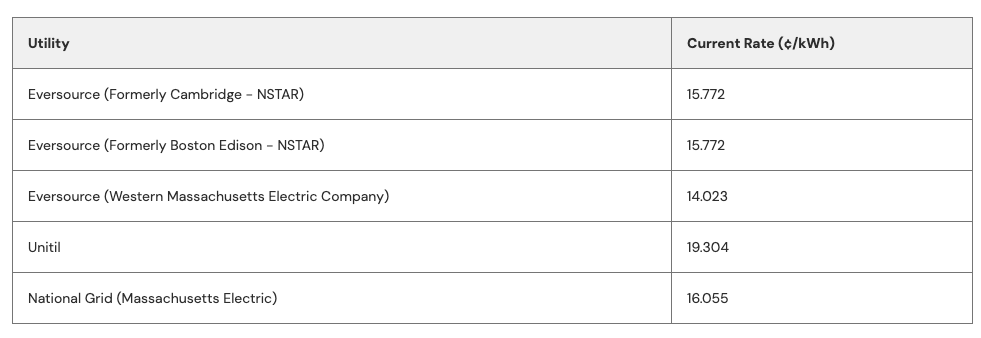
Arbor
Higher Rates Are Likely in Early 2025, But Some Areas Have Already Announced Prices are Going Down
Table showing current electricity costs across Massachusetts utilities.
These rates are expected to remain steady through January, but a spike is likely in February due to these current rates expiring on Jan. 31 and New England’s seasonal demand surge. Last winter, rates jumped by nearly 30% in this period, so it’s smart to prepare for higher winter bills. That being said, Eversource in Western MA and Eastern MA has already announced that their rate—price for electricity—is going down 15% on Feb. 1. This means that for a good portion of the state, some relief is on its way mid-winter.
How Much Energy Can I Expect to Use in November?
With cooler fall temperatures arriving, a household’s energy usage will likely fluctuate. In Massachusetts, depending on where a consumer lives and how often they’re running their heating system, usage may vary widely. On average, households in MA can expect to use about 1,114 kWh this month according to data from Arbor users, putting the state in the very high range for consumption.
Here’s a look at how MA compares to other states in terms of energy usage:
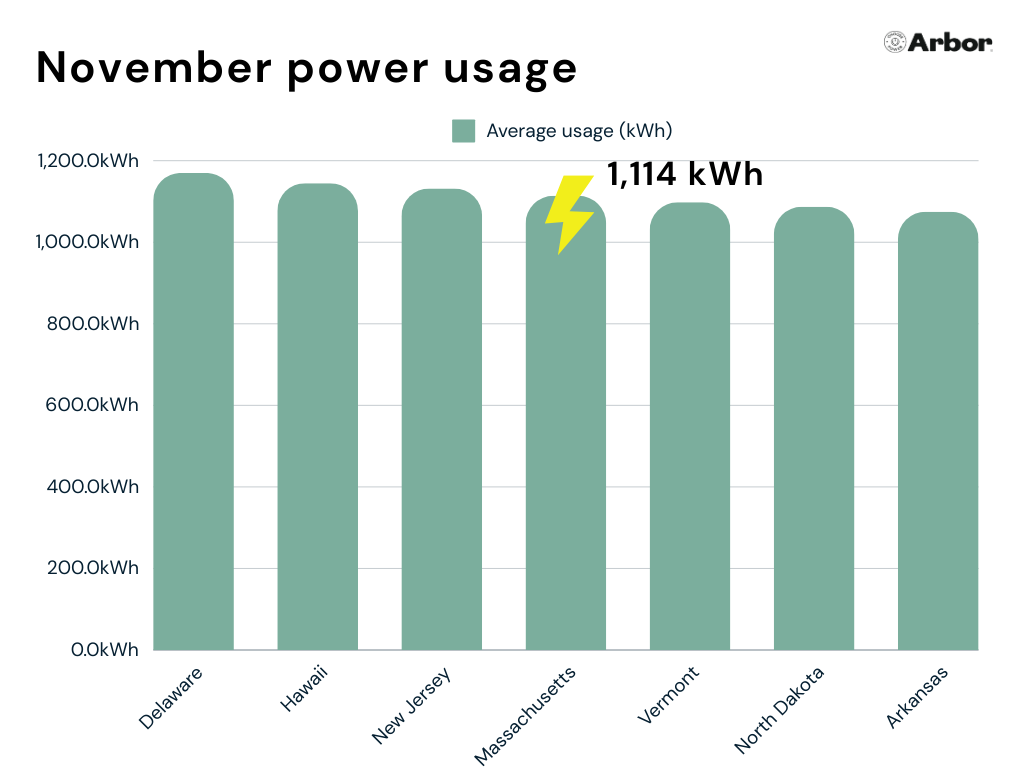
Arbor
MA’s High Energy Usage Set to Climb With Winter Heating Demand
Bar chart showing November power usage in MA compared to other states.
MA’s average usage of 1,114 kWh places it higher than most states, and with heating needs expected to pick up over the next few months, consumers should expect to use somewhere on the higher end of that average.
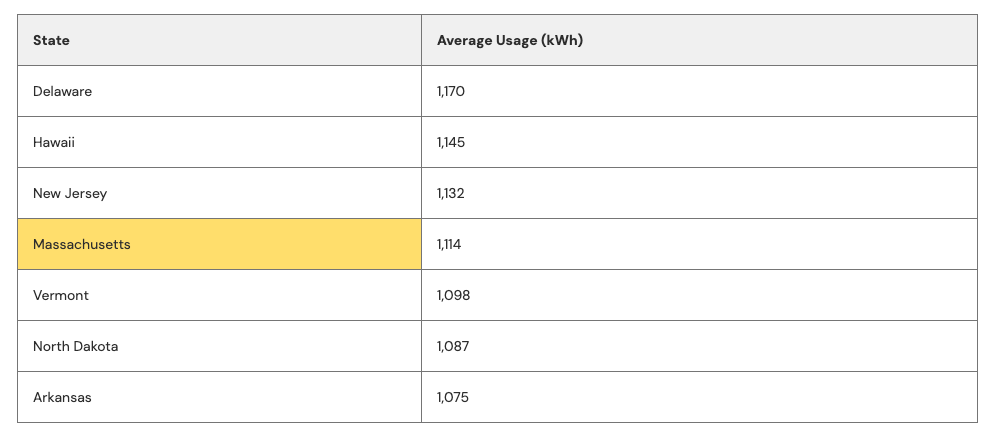
Arbor
How Much Will My Power Bill Cost This Month?
Table showing average power usage in MA.
For those wondering what their power bill might look like this November, there are several factors that go into power bill totals, including supply charge (the price paid per kWh). Here are some other key charges that will impact the total amount paid:
- Delivery charges: Utilities charge for delivering electricity or gas to every home. This includes maintaining the infrastructure, like power lines and pipes, and may vary depending on location.
- Capacity charges: Some regions charge for ensuring enough energy capacity is available to meet peak demand, especially during high-usage periods like summer.
- Taxes and fees: These can include local, state, and federal taxes, as well as regulatory and environmental fees.
- Metering and service fees: Utilities may charge for reading and maintaining the meter, as well as for general account services.
While it’s hard to predict what potential delivery charges, taxes, and fees might be, the supply portion of your monthly bill can be determined based on where you live. It starts with a simple calculation:
Monthly Bill = Average Usage (kWh) × Rate (¢/kWh) ÷ 100
For a Massachusetts household with average usage of 1,114 kWh and a rate of 16.9 cents per kWh, the estimated supply charge in November would look like this:

Arbor
Understanding and Preparing for Winter Energy Bill Fluctuations
Table showing how to calculate usage.
The actual bill will vary depending on each household’s specific energy consumption and size, but this calculation gives a good sense of what to expect. Keep in mind, bills will fluctuate with colder temperatures leading to higher heating needs in the winter months.
How Can I Save? What Rates Are Available?
Massachusetts’s deregulated energy market allows homeowners to shop for competitive electricity rates. This can provide savings compared to the default utility rates. Here’s an overview of some of the competitive rates currently available in Massachusetts. These are rates that are available now in the state that are lower than the current utility rate:
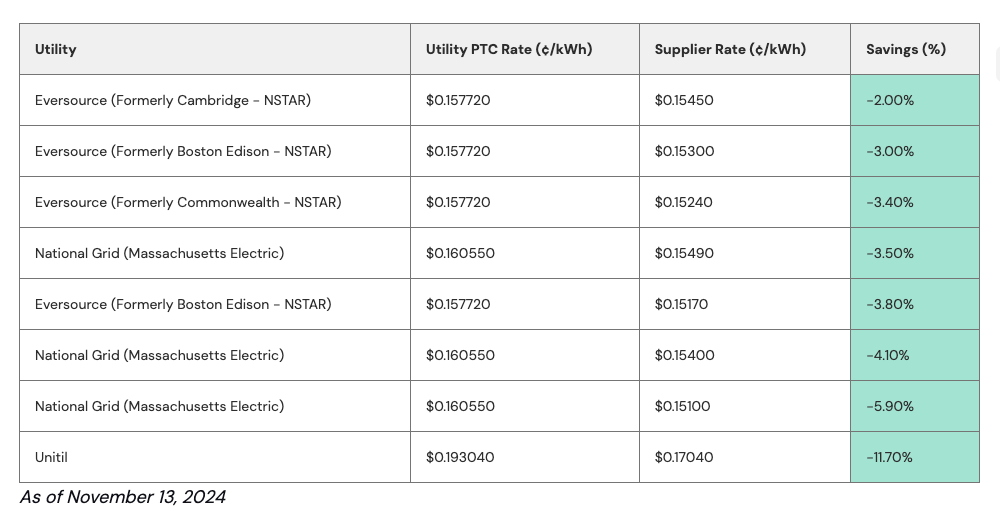
Arbor
Maximizing Savings and Rising Winter Electricity Rates
Table showing potential savings.
These savings can be substantial over time, especially with electricity prices set to rise this winter. Keep in mind that rates may fluctuate, so it’s always a good idea to regularly compare available rates and make the switch when it makes sense for your household.
This story was produced by Arbor and reviewed and distributed by Stacker.
